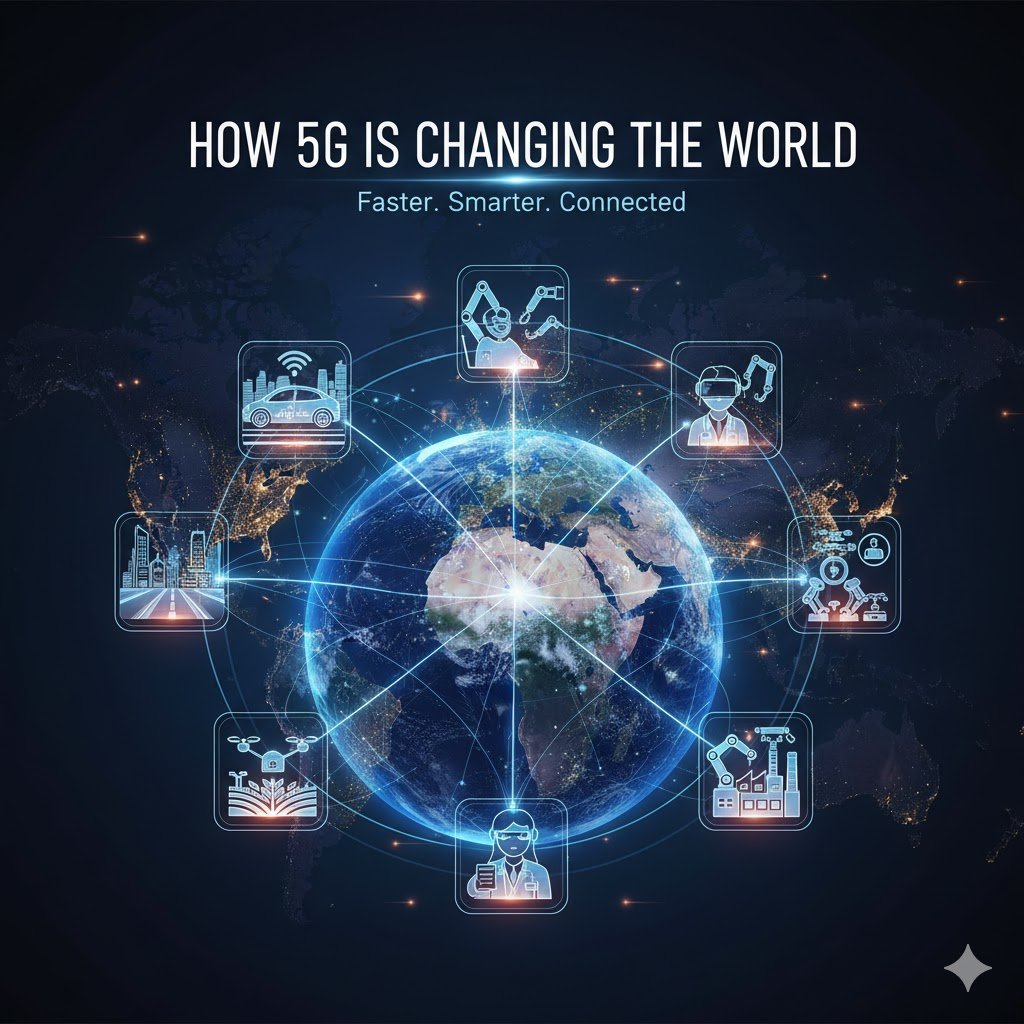The world has always evolved through the power of connectivity—from the telegraph to the telephone, from the internet to mobile data. Now, we stand on the brink of another revolution: 5G, the fifth generation of mobile network technology. More than just faster internet on our phones, 5G represents a transformation in how humans, machines, and the digital world interact. Its speed, reliability, and capacity are already reshaping industries, economies, and everyday life in ways that were once impossible.
Contents
Lightning-Fast Speeds and Near-Zero Latency
At its core, 5G delivers data speeds up to 100 times faster than 4G, with latency (the delay between sending and receiving information) dropping to just one millisecond. This may sound technical, but its impact is enormous. Imagine downloading a full HD movie in seconds or enjoying lag-free online gaming. Beyond entertainment, this responsiveness enables innovations in remote surgery, autonomous vehicles, and real-time industrial automation, where every millisecond matters.
For example, in healthcare, doctors can now guide robotic arms across continents during surgical operations. This was unthinkable with older networks, where even a slight delay could be disastrous. In short, 5G isn’t just about speed—it’s about precision and reliability on a global scale.
Transforming Industries Through Smart Connectivity
5G is the backbone of the Fourth Industrial Revolution. Its ability to connect millions of devices simultaneously makes it ideal for smart factories, agriculture, logistics, and energy management. Machines can now “talk” to each other through sensors and data analytics in real time, optimizing production lines, predicting failures, and saving resources.
In agriculture, for instance, 5G-powered drones and IoT (Internet of Things) sensors help farmers monitor soil quality, crop growth, and irrigation systems more efficiently. The result is higher yields, lower costs, and more sustainable practices. Similarly, in logistics, connected fleets use 5G to track goods instantly, reducing delays and improving supply chain transparency.
Enabling Smarter Cities and Sustainable Living
Urban centers around the world are becoming smart cities, thanks to 5G. Streetlights, traffic signals, and waste management systems are now interconnected, using real-time data to make cities cleaner, safer, and more energy-efficient. For example, traffic sensors can reduce congestion by automatically adjusting signal timings, while 5G-enabled surveillance helps emergency services respond faster to incidents.
Smart energy grids, another product of 5G connectivity, allow for better management of electricity consumption. By analyzing usage patterns, these systems can balance loads, reduce blackouts, and integrate renewable energy sources like solar and wind more effectively. The result? More sustainable, eco-friendly cities for future generations.
Revolutionizing Communication and Entertainment
The way we communicate and consume media is also evolving. With 5G, augmented reality (AR) and virtual reality (VR) experiences are becoming mainstream. People can attend virtual concerts, explore 3D museums, or even visit foreign cities through immersive simulations.
In education, students can engage in interactive, real-time learning environments—whether dissecting a virtual frog or exploring outer space through VR headsets. Meanwhile, content creators and businesses can deliver higher-quality video, live streaming, and interactive advertisements with minimal buffering or delay.
This fusion of entertainment and technology is blurring the line between the physical and digital worlds, opening new possibilities for creativity and connection.
Empowering Autonomous Transportation
Perhaps one of the most transformative effects of 5G lies in autonomous vehicles. Self-driving cars rely on massive amounts of data—constantly communicating with other vehicles, sensors, and road infrastructure. Only 5G can handle this exchange at the required speed and reliability.
Imagine a future where cars coordinate automatically to avoid accidents, optimize traffic flow, and reduce emissions. Buses, trains, and delivery drones all move seamlessly, guided by AI and 5G networks. This future isn’t far off—many cities are already testing autonomous transport systems powered by 5G.
Challenges and the Road Ahead
Despite its potential, 5G adoption faces challenges. Building the infrastructure—especially in rural or developing regions—is expensive and time-consuming. There are also concerns about data security and privacy, as billions of new devices connect to the internet. Governments, companies, and technology experts must collaborate to ensure that 5G networks remain secure, inclusive, and ethically managed.
Moreover, as technology evolves, so must regulations, workforce skills, and public understanding. Education systems need to prepare the next generation to harness 5G’s potential responsibly and innovatively.
Conclusion: A Connected Future
5G is more than just a network upgrade it’s a gateway to a smarter, faster, and more connected world. From healthcare to transportation, from entertainment to industry, it is revolutionizing how we live and work. The changes we are seeing today are only the beginning; as 5G expands, its ripple effects will touch every corner of our lives.
In essence, 5G is not merely changing theveryon it is redefining it, creating opportunities that were once limited to science fiction. The key to unlocking its full potential lies in using it wisely, ethically, and inclusively, ensuring that this new digital age benefits everyone.
